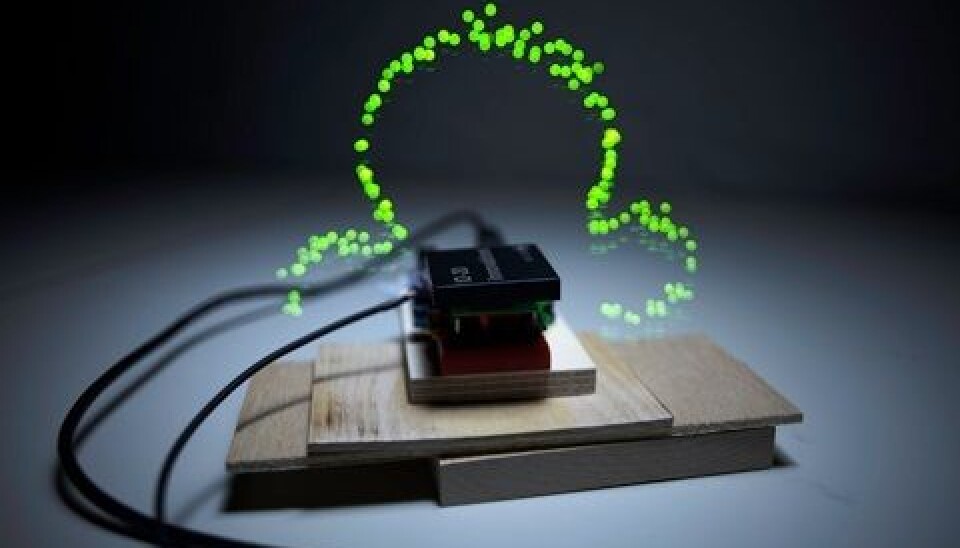An article from The Oslo School of Architecture and Design

Visualises controversial technology
A designer has come up with a way to visualise radio frequency identification (RFID), a technology that has raised concerns because of its potential to store personal information.
Denne artikkelen er over ti år gammel og kan inneholde utdatert informasjon.
Imagine that someone invisibly collects personal information from a travel card in your pocket. Today it is very much possible with RFID, a wireless technology designed to invisibly identify objects at a distance. New research has found a way to visualise this technology.
Computers can identify RFID tags and create transactions simply by ‘touching’ objects together. Today it is widely used in credit cards, retail security, mobile phones, and ticketing.
Timo Arnall at The Oslo School of Architecture and Design has written his doctoral thesis about the technology.
Arnall says that it is important to focus on the invisible nature of RFID technology, because that is the feature of the technology that makes it both commercially attractive and at the same time misunderstood and controversial.
Several protest groups
“If you have an RFID in your pocket containing information about you, like a travel card that you top up, a key to open your office door, or even a passport that contains biometric data, you have very little idea who has access to it. With wireless technology like RFID, as users we are not sure if someone across the street might be able to access the data”, says Arnall.
Today there are several protest groups claiming RFID is an invasive, ‘spy chip’ technology that will allow for control by corporations and government.
The dominant trend in interaction design is towards making technology invisible. Arnall believes that hiding technical systems can make them much more difficult to understand, and to critique as a part of culture and society.
“There is a need to explore these technologies materially and visually, and to communicate about them so that people know what is going on. It is alarming when technology becomes too abstract.”
Give better knowledge
Arnall has found a way to use interaction design to give better knowledge of how RFID inhabits physical space. In cooperation with Einar Sneve Martinussen and Jack Schulze from the design studio BERG he has visualised the radio field around a RFID tag by using a light-painting technique.
“We developed a process where we could photograph the physical characteristics of the system. This was done by developing an RFID tag connected to an LED that would flash every time the reader sensed it. By carefully moving the reader while taking long-exposure photographs, we could paint an outline of the ‘readable volume’ of the system”.
He believes this is important information for designers as well as the public.
“As designers we have to know the material we work with, if it’s wood, plastic or metal. Digital technology is no exception. This enables us to see RFID as something physical that we can use alongside the other materials we might use in design”.
The technique can be extended to other infrastructures, like GPS and Wi-Fi. Arnall together with Jørn Knutsen and Einar Sneve Martinussen made a film in 2011 (top of the page) where they visualised wireless networks in Oslo.
































